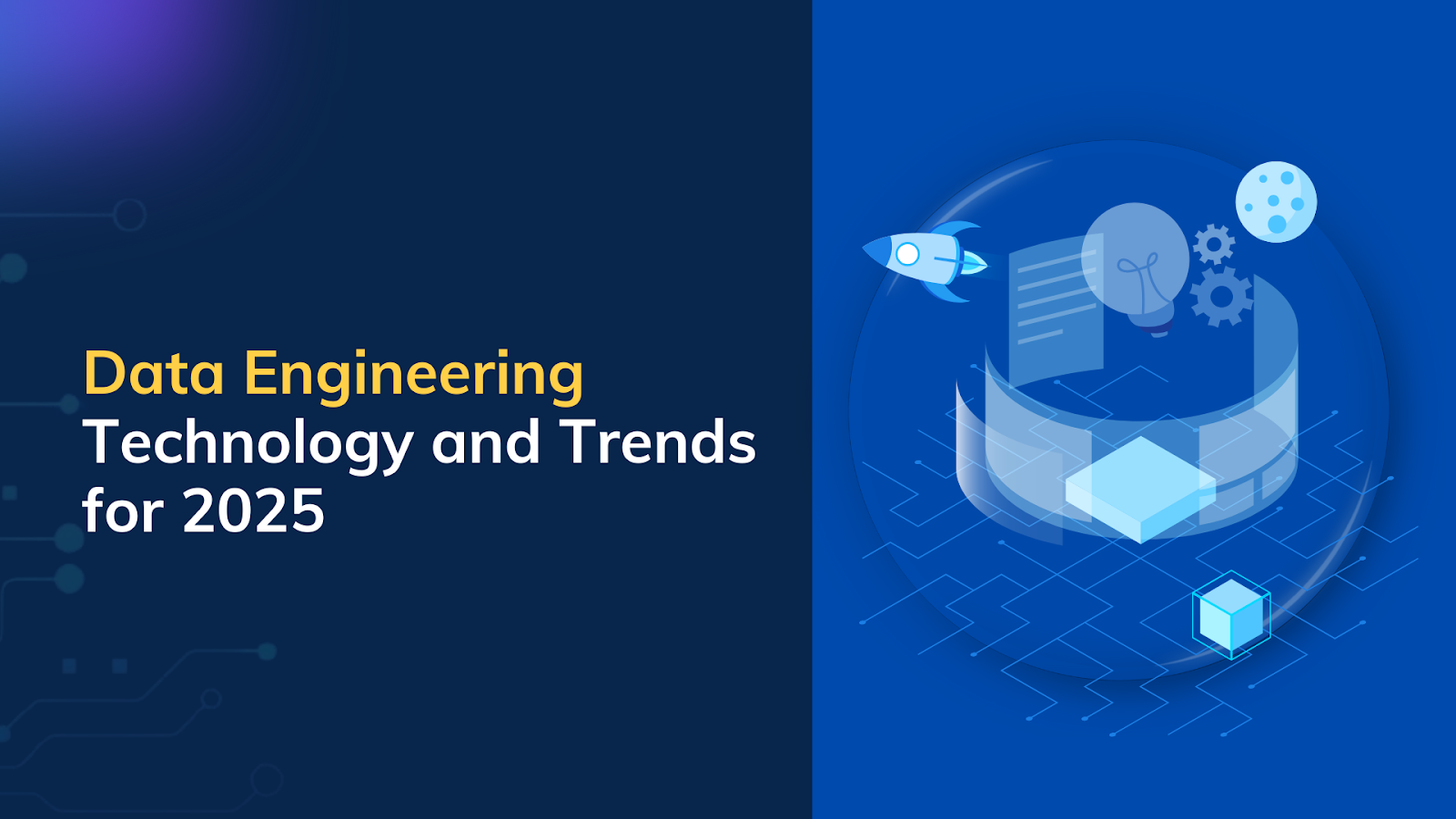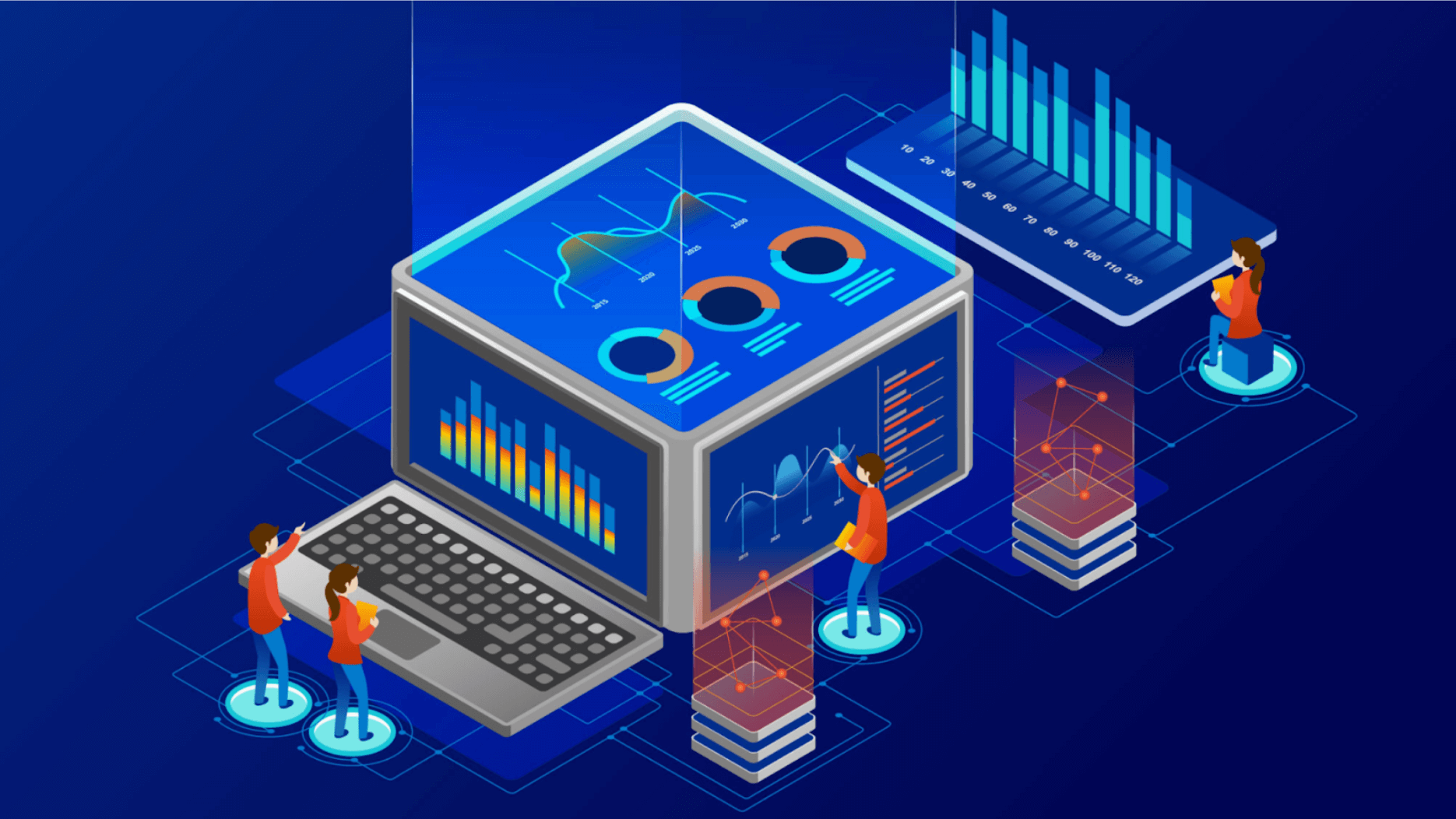Table of Contents:
- 1. future of data engineering
- 2. Data engineering solutions
- 3. AI in data engineering
- 4. Data engineering consulting services
- 5. Data engineering as a service
In the digital-first world, data engineering, from conception to implementation and maintenance, is the backbone of data-driven innovation. Data engineering involves transforming raw data into efficient architectures and systems for collection, analysis, and decision-making. With businesses generating vast amounts of data, effective data engineering practices enhance value through applications like business intelligence and AI-driven solutions.
The year 2025 will mark a significant shift in data engineering. With data volumes surpassing 180 zettabytes, organizations are transitioning from batch processing to real-time event-driven pipelines. Meanwhile, the rise of generative AI, automation, and low-code platforms is
transforming how engineers manage complex data ecosystems. Additionally, regulatory standards are pushing teams to prioritize compliance throughout the data lifecycle.
In this blog, we will focus on technologies, tools, emerging trends redefining data engineering in 2025, and the future of data engineering. Cloud-native architecture, data lakehouses, AI automation, and edge computing will be explored, ushering in a scalable intelligent data infrastructure era.
Evolution of Data Engineering
Data engineering has transitioned from the strict ETL (Extract, Transform, Load) of the past decades into an architecture that best suits and adapts to modern enterprise needs. The most radical change has probably been that from the old ETL to ELT, wherein raw data is loaded into massive power houses such as cloud data warehouses for transformation and to allow more flexible and performant usage of various data types.
Cloud native architectures, striding across platforms like Snowflake, Databricks, and Google BigQuery, will make it easy to scale pipelines, with gigantic data stores and serverless infrastructure management overheads as well. These technologies provide elasticity, instantaneity, and smooth integration all across the data stack.
At the same time, machine learning and automation will play an increasingly prominent role in pipeline design and operation. AI in data engineering systems will furnish a large number of concepts related to schema detection, anomaly detection, and even performance tuning.
However, adaptation to the wave of data engineering is also brought by practices like those of DevOps and DataOps. These practices reflect the nature of working in collaboration along a continuous integration/deployment paradigm (CI/CD), versioning, and automated testing of data pipelines. These principles in practice guarantee reliable, agile, and repeatable data workflows aligned-almost more than ever-with software development principles.
Core Technologies Driving Data Engineering in 2025 :
The growing data landscape is inspired by a new age of tools and platforms empowering data engineers to develop scalable, real-time, intelligent data systems. Cloud data platforms, data lakehouses, and real-time data are the three pillars of technology in the year 2025, which will lead this transformation. Let's discuss them briefly:
Cloud Data Platforms :
Cloud data platforms like Snowflake, Databricks, Google BigQuery, and AWS Redshift dominate the data engineering landscape. They offer immense power and flexibility, enabling organizations to process petabytes of data without managing infrastructure directly. The rise of serverless computing shifts the focus of data engineering to logic and outcomes, enhancing the efficiency of data workflows.
Data Lakehouses :
The lakehouse architecture merges the scalability of data lakes with the performance of data warehouses. Utilizing open file formats such as Delta Lake and Apache Iceberg, it supports effective storage and real-time querying of both structured and semi-structured data, making it ideal for analytics and AI/ML workloads.
Real-Time Data Streaming :
With the increasing need for timely insights, technologies like Apache Kafka and Confluent have become essential in modern data stacks. They facilitate event-based architectures that process data upon arrival, rather than at set intervals. This approach is crucial for applications like fraud detection, personalized recommendations, and IoT analytics, as organizations strive for faster response times and improved user experiences.
Modern Data Stack: 2025 Edition
The current modularity, scalability, and interactivity of the modern data stack in 2025 have never been better. It is arranged following cloud-native principles and comprises specific, high-performance tools that automate end-to-end use of data ingestion to monitoring.
On the app's front, data ingestion tools like Fivetran and Airbyte automate data extraction from numerous sources and integrate it into a staging database. With ready-made connectors and incremental load support, the engineering effort is minimized, and so is the time to insight.
Transformation happens in the warehouse by platforms such as dbt (data build tool) and Dataform, which allow data experts to SQL-transform data within the warehouse. The ELT model is scalable, testable, and developer-friendly, and is very focused on transparency and collaboration across teams.
Adaptation of workflows with tools like Apache Airflow and Dagster allow data engineers to schedule, monitor, and manage complex pipelines with ease. Integrated with modern development practices like CI/CD and version control, such tools explicitly integrate into the fabric of day-to-day data jobs.
They are also examples of new-age real-time monitoring tools for ensuring a data quality and observability platform other words, monitoring data lineage and possible anomalies. The imperative promise for teams, then, is to watch out for proactive identification before something ever gets into analytics or operations.
The dominant theme here is plug-and-play interoperability: if the current trends prevail, tools will be increasingly built to be composable, API-friendly, or easy to integrate. This composability
reflects the end-user reality of using best-in-class data engineering solutions without caging them within the boundaries of standard application suites.
Automation and AI-Powered Data Engineering
The data engineer's role has been transforming due to automation and artificial intelligence since 2025. With AI powering schema detection, error corrections, pipeline optimization, and other routine manual tasks that were the previous domain of data engineers, architects, and inventors are now free to focus on more strategic issues.
Another major paradigm shift is the emergence of Auto ETL and low-code/no-code pipeline builders. These tools abstract much of the complexity behind pipeline creation, allowing even non-technical users to design robust workflows through drag-and-drop interfaces or natural language prompts. This democratization of data engineering shortens development cycles and fosters collaboration across teams.
Predictive data quality tools powered by AI can detect anomalies, observe schema changes, and alert teams to issues before they affect downstream systems. Such abilities shorten downtime and ensure the reliability of data in distributed environments.
Generative AI is playing an increasingly important role in data cataloging and metadata management, helping automatically generate documentation, tag data assets, and respond to natural language questions about datasets. This speeds up and humanizes data discovery, especially within larger environments.
A standout trend today is the rise of AI copilots for data engineers, intelligent assistants giving code suggestions, auto-generating pipeline templates, and performance recommendations. These are resultantly enhancing productivity.
Data Governance, Privacy & Compliance in 2025
Since 2025, data governance has suffered from being an afterthought to a key aspect of data engineering. Now, organizations are implementing proactive measures for governance by directly embedding policies into data pipelines to ensure compliance, quality, and security from the ground up.
Leading governance tools like Collibra and Alation are tightly integrated with modern data stacks. These platforms automate the documentation of data assets, track lineage, manage access, and enforce policy-as-code, turning governance into a scalable, code-driven discipline rather than a manual process.
Now, increased focus would be given to data lineages, access controls, and permissions restricted by roles to ensure proper handling of sensitive information throughout its life cycle
Engineers must now build a pipeline that not only moves and transforms data, but also observes the organizational and regulatory boundaries.
And the challenge intensifies with the threat of new privacy-concerns: expanded GDPR-like regulations in many parts of the world, not to mention those having new AI and data localization mandates. Data engineers will be pushed to work very closely with legal and security teams to address compliance issues arising in the changing standards for data processing.
In 2025, governance is all about setting up trusted data ecosystems where compliance is automated, built in transparency, and minimized risks without slowing innovation.
Data Engineering for AI/ML Workloads
Data engineering is vital for AI/ML at scale as enterprises plan to incorporate artificial intelligence and machine learning in their strategies. Clean data, organized well and available in time, is the essence of any successful model. Hence, the work of data engineers is indispensable in all modern ML pipelines.
Feature stores such as Feast and Tecton, a key innovation in this domain, provide centralized and shared repositories for features that can be reused. These platforms promote consistency between the training and production environment, cut down on redundancy, and allow greater collaborative effort among data scientists and engineers.
Supported by MLOps workflows, data engineering teams set up pipelines for the automation of data collection, preprocessing, versioning, and monitoring. One of the big challenges they face is managing drift in the data, which is changes in input data that could lead to degrading model performance over time. Therefore, continuous monitoring and triggers for retraining are built into pipelines to ensure model reliability.
Data engineers are also confronted with the management of structured and unstructured data: tabular records, text, images, and audio files. This implies that they must create flexible architectures, allowing for various formats and storage requirements while still ensuring that every type of data is accessible and usable for AI workloads.
Trends to Watch in 2025 and Beyond :
In the course of developing data engineering, certain major trends will determine the field's transformations. Be it decentralization or edge computing, all of these lead to innovations and transform the avenues of data collection, processing, and consumption.
1. Data Mesh Adoption :
Organizations inclined to scale data ownership and innovation are increasingly adopting Data Mesh. This architecture promotes a federated data ownership model where cross-functional teams treat their data as a product. Viewing their data pipeline from a domain-driven design perspective allows organizations to avoid the bottlenecks caused by centralized data teams. Faster delivery and better data quality are the pros; standardization, interoperability, and the need for cultural change are the cons.
2. Edge Data Engineering :
With the uptake of IoT devices, autonomous systems, and the connected infrastructure, edge data engineering has become very much in demand. Instead of transmitting all the data to centralized systems, pipelines are now built close to the source, enabling real-time processing with minimal latency. When dealing with data on a scale in scenarios like smart manufacturing, retail analytics, and self-driving cars, light and distributed data collectors and edge-native architecture are a must.
3. Multi-cloud and hybrid models :
In light of regulatory or performance requirements and to avoid vendor lock-in, enterprises are increasing their adoption of the multi-cloud and hybrid paradigm. Data engineering platforms must provide unified processing and governance of all AWS, Azure, GCP, and on-premise environments. Equally important are abstraction and portability tools for seamless data movement and orchestration across heterogeneous infrastructures.
4. Expanding Open Source :
There is increased momentum with open source: DuckDB, Apache Arrow, and Polars are excellent alternatives to costly licensed solutions. Living on community resources, this community development accelerates innovation and gives access to advanced data engineering capabilities for, in particular, startups and small teams.
Conclusion
By 2025, data engineering will mean more than just building data pipelines and storage systems. It will also involve making smart decisions in real time across the entire business. Modern data engineering tools go beyond pipelines and warehouses; it now includes cloud tools, AI automation, real-time streaming, and improved governance. This shift makes data engineers key players in driving business innovation.
Trends like data mesh, edge processing, and open-source tools continually push the boundaries of what’s possible. To stay competitive, companies must adopt flexible and forward-thinking data engineering practices that emphasize speed, dependability, and teamwork. Ultimately, the future will belong to those who can turn complex, distributed data into trustworthy insights more quickly and intelligently than ever before.
BestPeers is a renowned software development company offering data engineering consulting services to businesses. If you want to back up your business with the latest data engineering strategies, contact us today!




